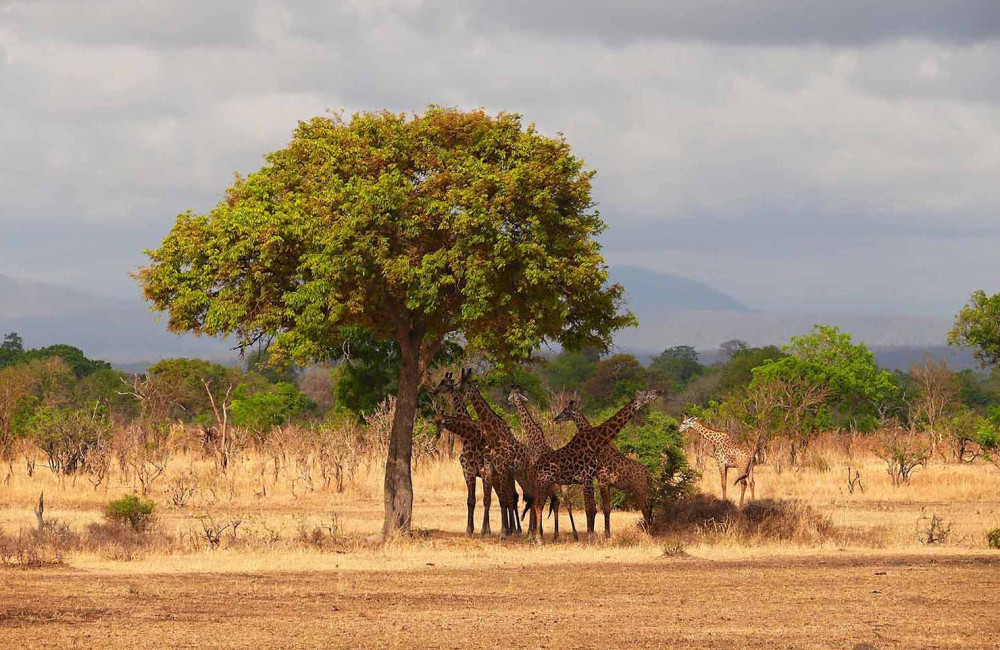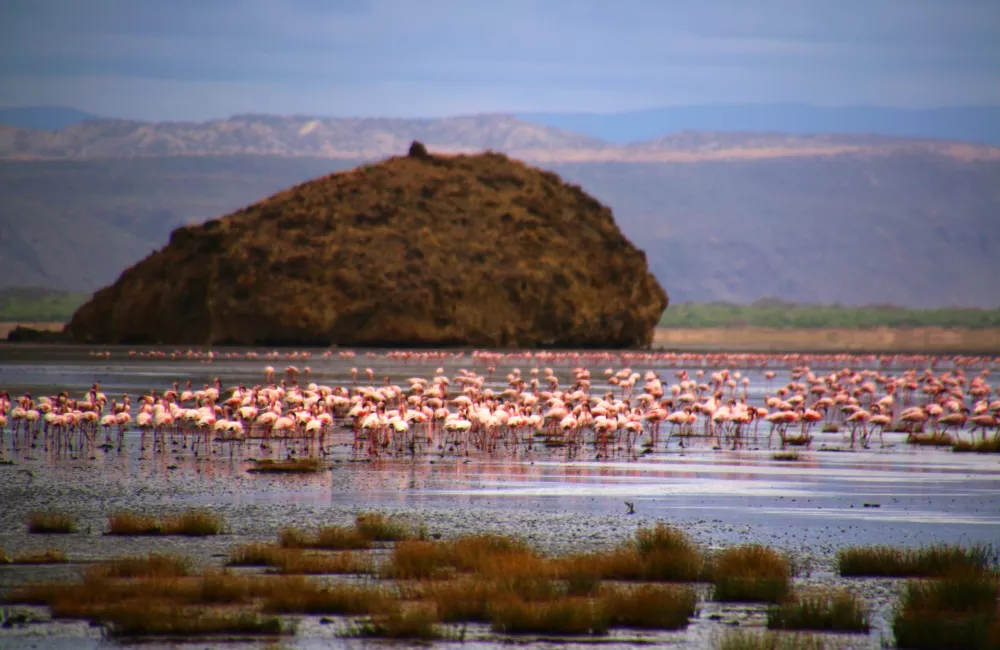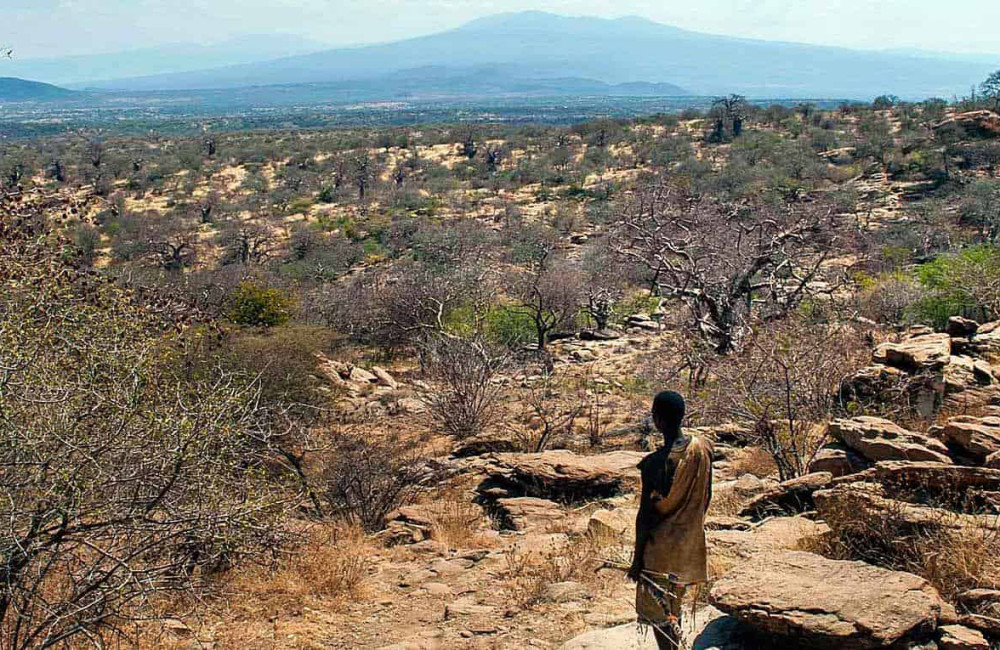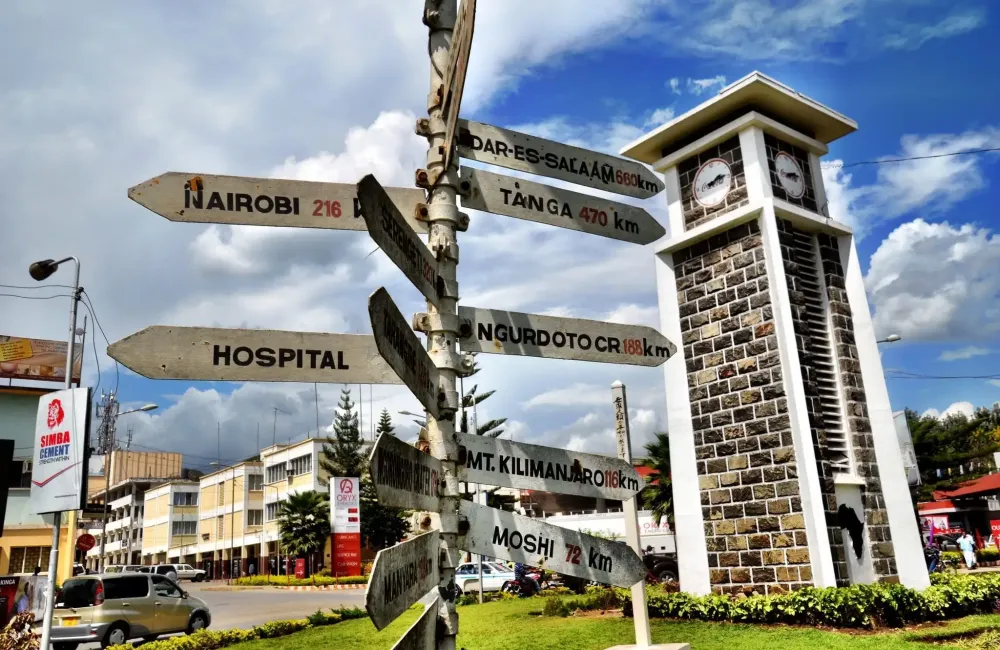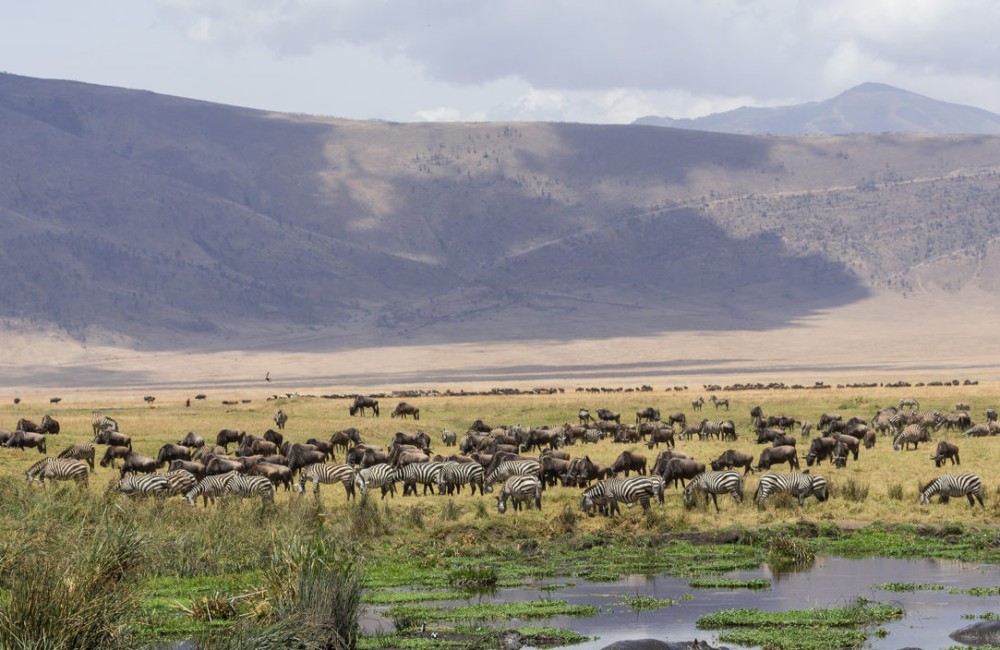
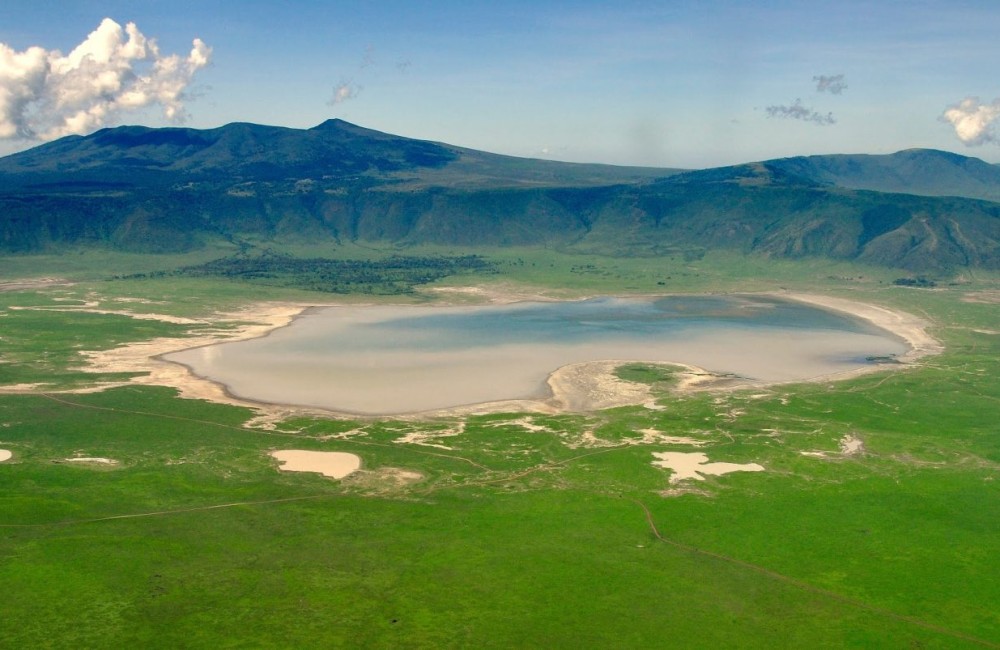
Ngorongoro Crater Safari
The Ngorongoro Crater is without a doubt one of the most popular tourist destinations in Tanzania (and likely in all of Africa).
Home to a vast volcanic crater and wildlife such as elephants, lions, and buffalo, Ngorongoro is definitely a destination you will want to add to your safari adventure!
What is the Ngorongoro Crater?
The Ngorongoro Crater is considered the defining feature of Ngorongoro Conservation Area in Tanzania.
The Ngorongoro Crater is the world’s largest intact and unfilled volcanic caldera (a caldera is the hollow space that forms after large amounts of magma are erupted from a volcano). It dates back as far as three million years (based on most estimates).
The Crater was formed when a large volcano erupted then collapsed into itself. It is over 600 meters deep, with its floor covering roughly 250 square kilometers. Pretty massive!
The crater provides an incredible view to tourists and visitors alike, and remains one of the best places in Africa to get a sweeping view of the natural and living world. The crater holds plenty of flora, fauna, and wildlife.
Location
The Ngorongoro Crater is located in Ngorongoro Conservation Area in Northern Tanzania. It is located almost 200km west of Arusha, a popular hub city for safari-bound tourists.
It is one of the most popular destinations in the “safari circuit” of Northern Tanzania, which includes other popular destinations such as the Serengeti, Mount Kilimanjaro, and Tarangire National Park.
Wildlife
The Ngorongoro Crater is an excellent spot to get a sweeping view of much of the wildlife that is native to Northern Tanzania. In fact, the Ngorongoro Conservation Area holds one of the highest densities of big game in all of Africa. Roughly 25,000 large mammals make home in the Ngorongoro Conservation Area.
The Ngorongoro crater is an excellent spot to get a glimpse of the ‘big five’ game animals: leopards, lions, rhinos, elephants, and Cape buffalo. There are many more species than that in the area though, including hyenas, wildebeest, hippopotamus, blue monkeys, and much more!
Ngorongoro is also home to a diverse bird population, including Silvery-cheeked hornbill, grey crowned cranes, and others.
Ngorongoro Tours
Although it’s not a necessity, we highly recommend booking a tour of the Ngorongoro Crater to see it properly. Not only do you get the benefits of a pre-planned trip, you also get an experienced guide, which can be useful because it’s such a large area of land.
It’s also worth noting the benefits of seeing the crater in a proper safari vehicle. These vehicles have open tops, which give you a better view. You are much more in nature than you would be in a normal car.
Do-It-Yourself Options
If you want to visit the Ngorongoro Crater on your own, without a tour, that’s also an option! However, make sure to do your research and prepare everything you need beforehand. Here are some things to consider.
How Much Should I Budget?
With a tour, everything is paid for ahead of time and planned out for you. But if you decide to explore the area yourself, then you’ll need to plan accordingly. Here is approximately how much you’ll need to budget for your trip:
To visit the Ngorongoro Conservation Area, the cost is $70.80 per person (full-day visit)
Vehicle entry for your rental car is between $10 and $20 depending on the type of car you want to use
If you plan on entering the Ngorongoro Crater, you will have to pay an additional $295 per vehicle
Doing a “crater drive” requires a mandatory guide to assist you, which can be paid at the NCA headquarters building – this usually costs another $20
If you plan on spending the night, there are public campsites available at $35 per person per night
For more details on costs, we suggest checking out the official Ngorongoro Crater website.
Where Can I Stay or Camp?
There are a number of public campsites at Ngorongoro which you can camp out at for a small fee. There are also “special” campsites, however these are usually reserved by the tour companies and are hard to book.
Your best bet is either Karatu, which is a nice and affordable place to set up base camp, or Rhino Lodge. You won’t get as much of a view at Rhino Lodge, but it is a popular spot for anyone looking for affordable lodging.
How Many Days Should I Stay at Ngorongoro?
The Ngorongoro Crater permits are valid for 24 hours, which is usually enough to see the majority of the sites. However, camping out for a 2-3 days is always a great experience and you won’t feel rushed. Here are some driving times to give you a better idea of how to plan out your trip:
- Arusha to Ngorongoro Crater entrance – 3 hours
- Loduare Gate to Ngorongoro Crater entrance – 1.5 hours
- Ngorongoro Crater entrance to Naabi Hill Gate – 2.5 hours
- Tourist Tips for the Ngorongoro Crater
- It Gets Very Busy
Perhaps the first thing we should note is the Ngorongoro Crater is an extremely popular tourist destination, so it gets very crowded. While some times of year are busier than others, it always maintains a steady flow of tourists and visitors.
On top of this, the crater is relatively small compared to many of Tanzania’s other top safari trips. The crater itself only covers roughly 250 square km, and the entire Ngorongoro Conservation Area covers over 8,000 square km.
This may seem large, but compared to an area like the Serengeti, which covers roughly 31,000 sq. km, it becomes quite limited.
The crater is a wonderful place to visit, and a fantastic site to see for yourself for about one or two days. Most tourists will see the crater, and book a more extended safari trip in a less crowded, more spacious area like the Serengeti.
The Crater is absolutely worth seeing, but might be best as part of a larger safari adventure.
Start Early
If you’re visiting the Ngorongoro Crater, plan to start your trip early in the day. The animals are most active in the early hours when it is cooler. After that, they prefer to hide, or sleep in the shady areas, making them much more difficult to see and much less interesting to watch.
This is why most tourists plan an overnight stay nearby the night before they visit the crater. There are many lodgings located on the rim of the crater. There is also a town nearby in the Ngorongoro highlands with plenty of lodging.
Best Times to Visit
There isn’t necessarily a bad time to visit the Ngorongoro crater. However, the experience will definitely differ depending on when you go. We recommend you go during peak season or during rainy season.
Tourist Season
Peak season is certainly the time when the Ngorongoro Crater is busiest. However, it’s also the best time to see some of the fascinating sites that the park has to offer, which makes it a great time to visit.
Peak season in the Ngorongoro Crater runs from June to September. This is actually winter in Africa, and you won’t experience the scorching heat that occurs at other times of the year.
This time of year is also popular for viewing the iconic wildebeest migration that passes right through Ngorongoro.
Of course, because it’s such a busy time of year, be prepared for more expensive hotels and accommodation.
Rainy Season
The rainy season runs from April to May in Northern Tanzania. This season is most popular with certain tourists because it’s not as crowded as the other seasons. You get to experience the crater when it’s not so full of people. Don’t expect it to be empty though. The crater is a busy destination all year round.
The rainy season is popular for more than just this reason. The rain brings out the natural colors of the Crater. The greens really pop, and it’s a chance to view the crater when its colors are most vibrant.
Additionally, because of the higher water levels during this season, you’ll see more flamingoes crowding Lake Magadi, which is located in the middle of the crater. This is a nice bonus for traveling during the low season.
Ngorongoro Conservation Area is most accessible from Arusha. Arusha is considered the hub city for the many safari destinations in Northern Tanzania (Mt. Kilimanjaro, the Serengeti, Ngorongoro, etc.). You will likely fly into Kilimanjaro Airport (about 60km from Arusha) to visit these destinations.
Getting from Arusha to Ngorongoro is quite straightforward. It is roughly a 3-hour drive from Arusha to Ngorongoro Conservation Area. There are many private vehicles and guide services which can take you there.
Flying is also an option. Many guided trips provide flights into the Lake Manyara airstrip. Here, you will be guided to a camp, where you will stay while at the crater.
Conclusion
Thanks so much for reading our guide to the Ngorongoro Crater. This is one of the most popular tourist destinations in Tanzania and for very good reason.
We hope that this guide has given you extensive background knowledge of the crater itself, as well as the top tourist tips & tricks to watch out for. Ngorongoro Crater is an amazing experience. It just takes some careful planning and preparation to make it perfect.
